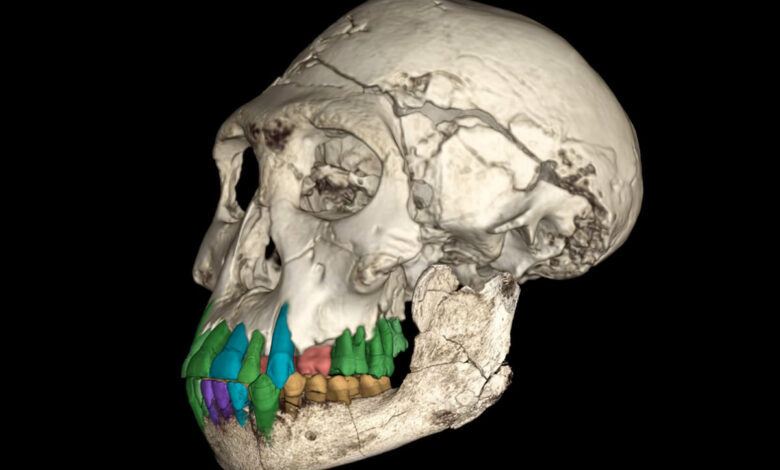
We all know that humans, unlike many other creatures, take a long and complicated path to adulthood; This path is about twice as long as that of chimpanzees. Scientists see this delay as an opportunity to grow larger brains and learn skills that help us survive and reproduce.
But now, a study examining ancient juvenile teeth suggests that the slow growth process may have begun at least as early as 1.8 million years ago, about half a million years earlier than any other evidence suggests.
In a new study published in the journal Nature, using advanced X-ray imaging, the researchers traced the growth lines of the molars of an ancient extinct member of the “human” genus.Homo) who lived 1.77 million years ago in the present-day Demanisi area in Georgia.
Teeth are the key to understanding our growth process
The findings showed that although the growth of the ancient Damanisi man was faster than that of today’s children, his molars had undergone a slow growth process in the first five years of life, just like modern humans. This discovery, in a group of humans with brains roughly the size of chimpanzees, could reveal secrets from the beginning of humans’ long childhood.
Elysia Navaa bioarchaeologist from Sapienza University in Rome, says: “One of the important questions in paleoanthropology is when did the pattern of slow growth appear in the human species. “Now we have an important clue.”
Of course, some other researchers also caution that although the teeth of ancient young people grew slowly from Demanisi, other people, including our direct ancestors, may have grown faster than him.
Traces of the past in the teeth
Since the 1930s, researches have shown that the period of immaturity of humans is different from other members of the human family (Hominidae) is longer. There are also theories that our ancestors evolved this delay to have more time to develop larger brains or learn to adapt to complex social interactions. Teeth, especially permanent molars, are key to understanding this process because their growth lines, like tree rings, record the exact details of the growth process.
Researches have shown that the first human ancestors grew fast like other members of the human family. For example, the teeth of a 2.4-million-year-old Australopithecus afarensis species that lived in Ethiopia and was the same species as Lucy’s famous skeleton grew at the same rate as chimpanzees. But until 1.2 million years ago, the pioneer human species (Homo antecessor) from Spain, showed signs of slower growth, still longer than other humans, and still as intelligent as our species (Homo sapiens), had not slowed down.
read more
The fossil of Demanisi, discovered in 2001, included a perfectly preserved skull, jaw, and teeth. Christoph Zollikofer and Marcia Ponce de Leon, paleoanthropologists from the University of Zurich and Paul Tafuro, Paleontologists at the European Synchrotron Radiation Center used synchrotron power (a type of ring-shaped particle accelerator) to take high-resolution X-ray images to count the growth lines on the fossil’s teeth. These lines are formed from the accumulation of layers of dental dentin and occur approximately once every eight days in modern humans. By counting these lines, the research group found that the Damanisi man was about 11.4 years old at the time of his death.
By analyzing the dark lines of stress on the teeth that are caused by disease or improper diet, the researchers aligned and then reconstructed the growth path of all the teeth. They made a virtual video of how teeth grow in the mouth of this ancient child in six-month intervals. “The results show how each tooth has developed over the course of a person’s life,” says Ponce de Leon.









